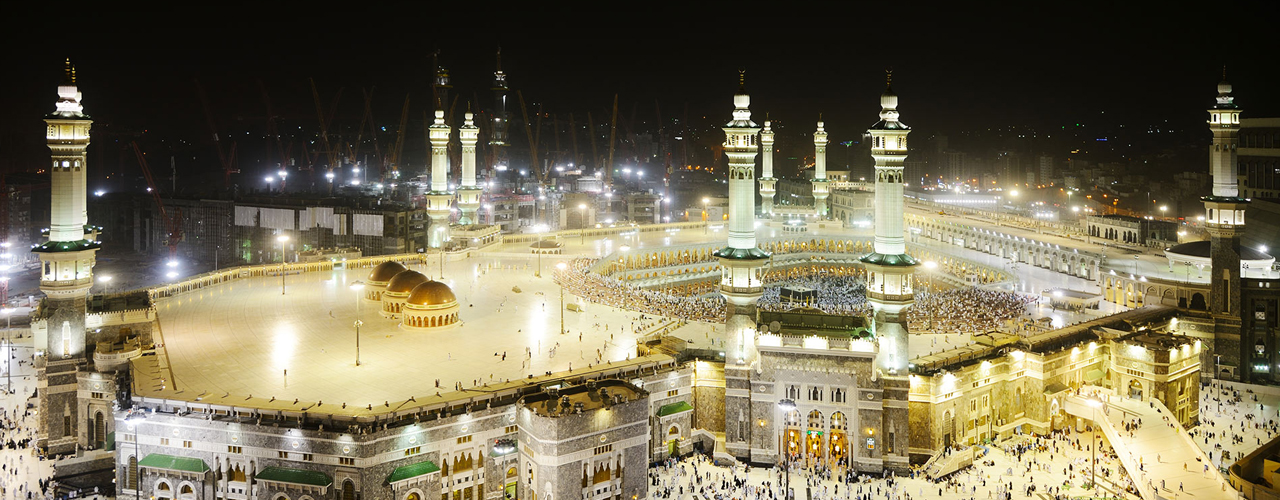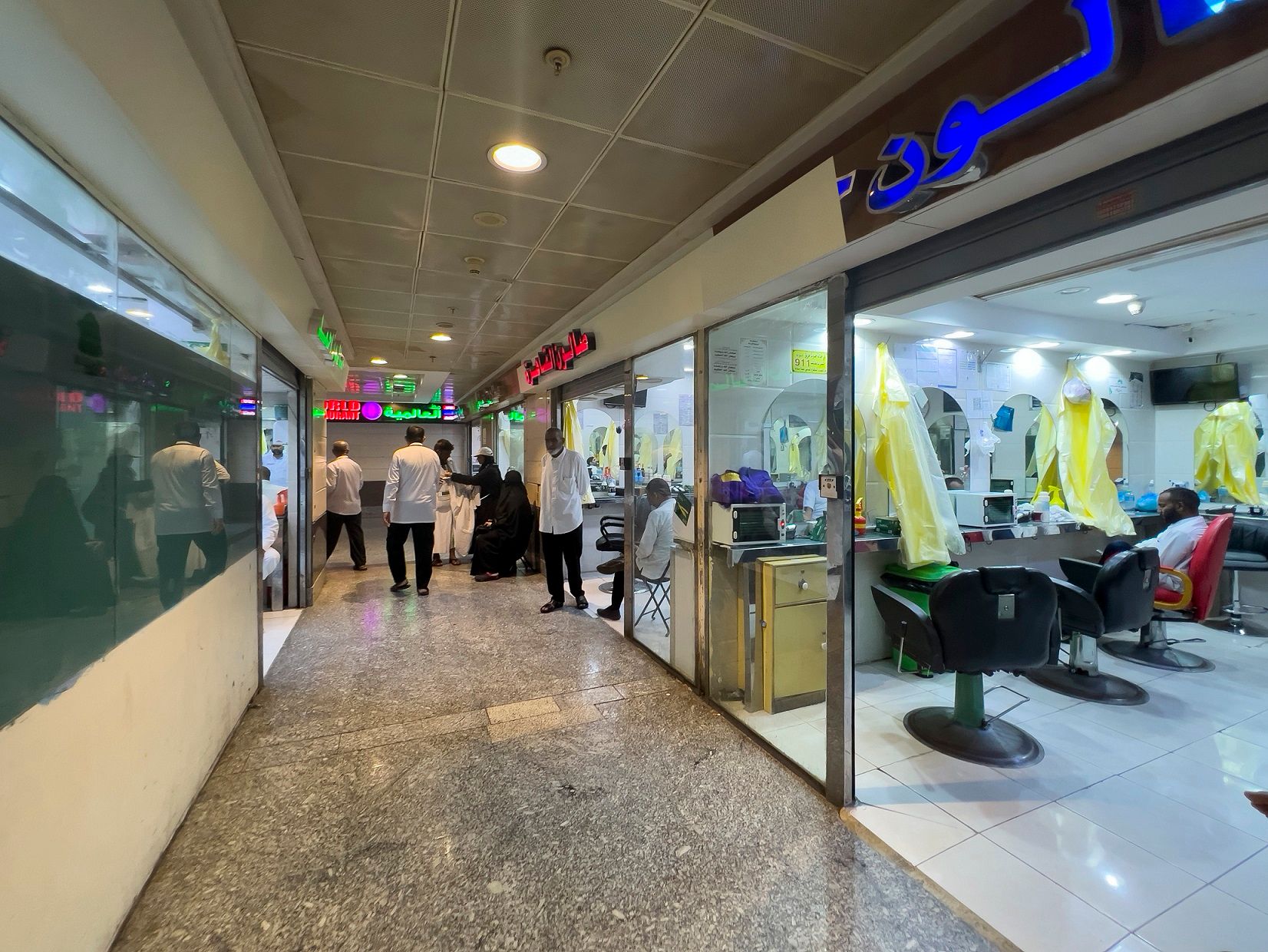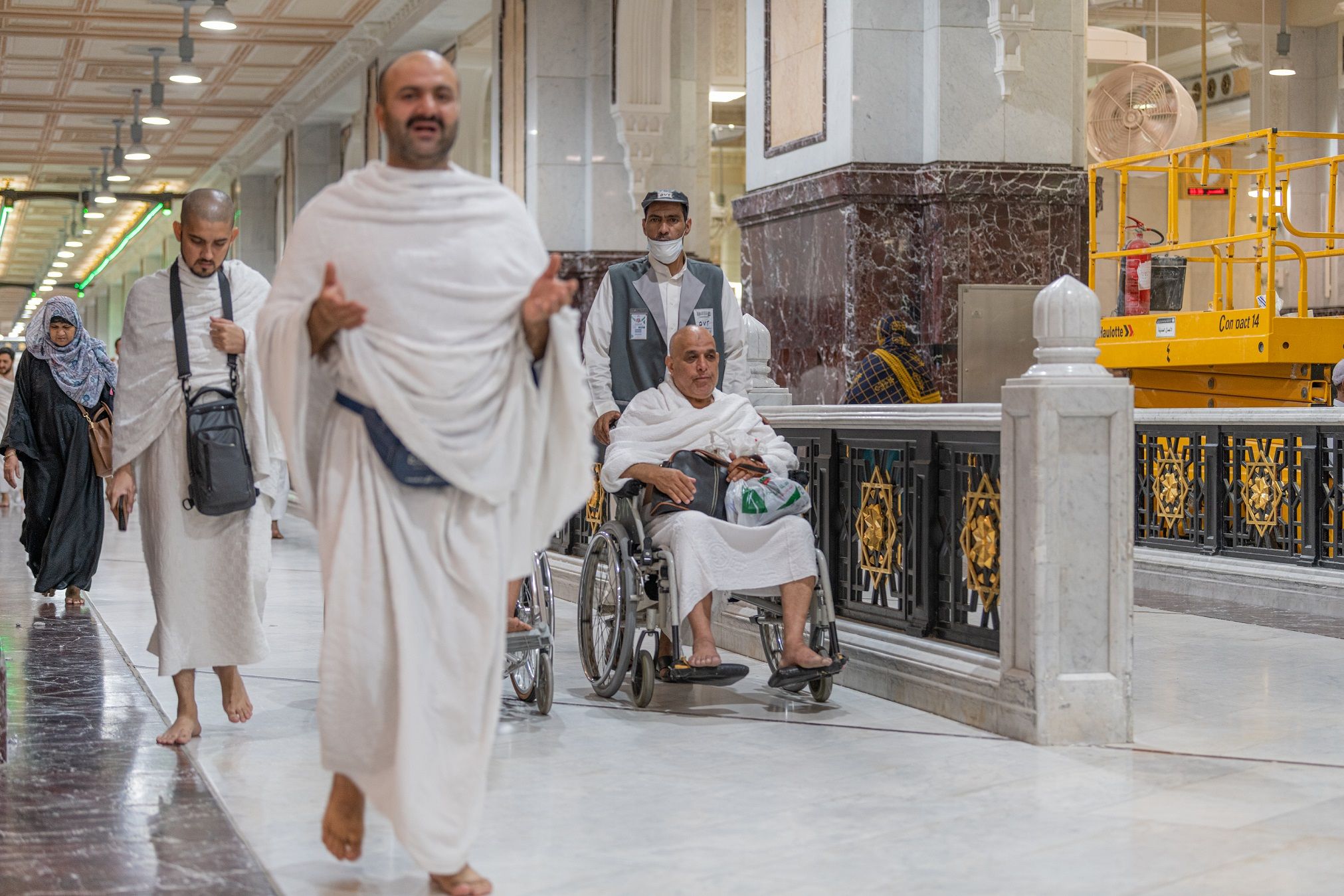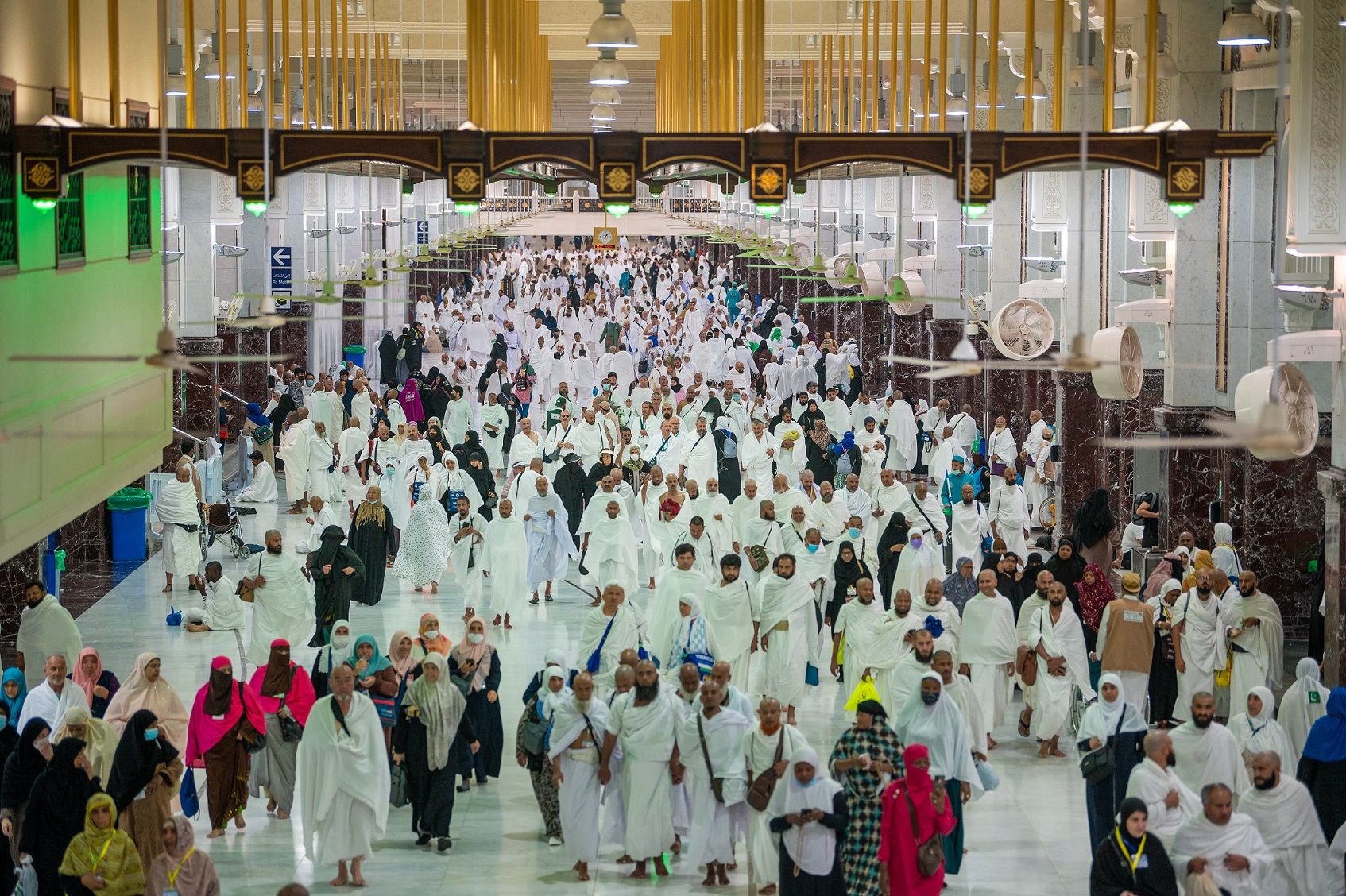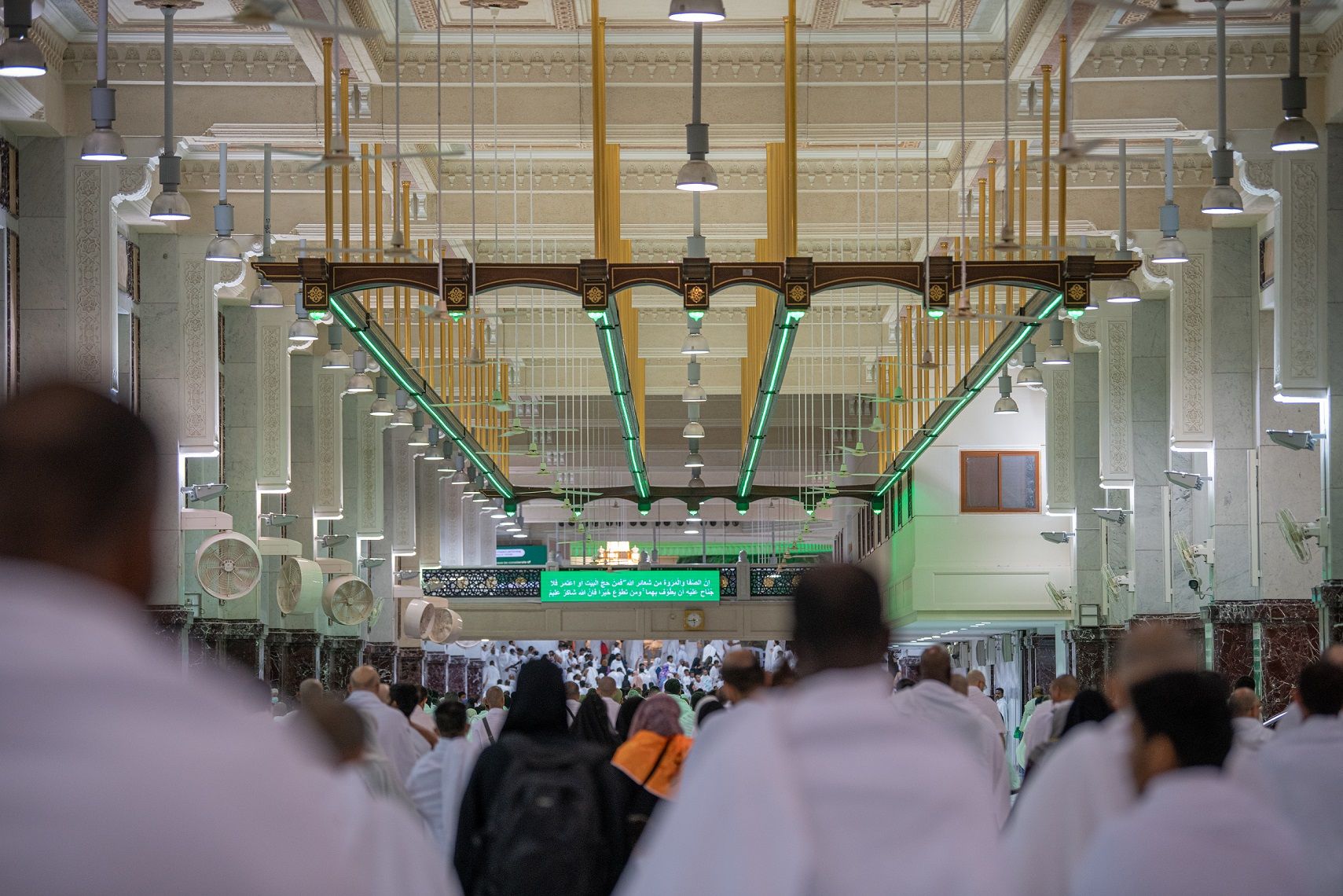A person who is unable to walk due
to disability, tiredness, illness, or old age may perform Sa'i
while riding, and he must remain awake and attentive because he
is involved in an act of worship. He should fill his time with
supplication to Allah, say Takbir, and supplicate whenever he
reaches Safa or Marwa.
Various types of
wheelchairs are available for circumambulation
Wheelchairs for
Pilgrims
- A pilgrim having a wheelchair is allowed to use it provided
that he uses the gates designated for people with disability
Free Wheelchairs
- Free wheelchairs are available for pilgrims performing Hajj
or Umrah if one has someone to help them during Sa'i
These wheelchairs can be
accessed at the following points
- Eastern square (bus entry gate)
- Southern square (next to Endowment of King Abdulaziz)
- Western square (Shubaikah Gate)
Pushing Wheelchair
Service
- These are young men trained to push the wheelchaired people
Service Points
- The ground floor of the Tawaf yard (starting line) (Link to
website)
- The ground floor of the Tawaf yard (Gate 14)
- The second floor of the Tawaf yard (the Al-Arqam Escalators)
- Endowment of King Abdul Aziz
Electric
Wheelchairs
- These are safe power wheelchairs that are easy to drive and
control during circumambulation and Sa'i
- There are two types: one-person and two-person electric
wheelchairs
Service Access
Points
- Electric wheelchairs are located on the first Mezzanine
floor of circumambulation and Sa'i
